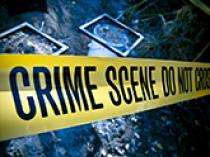Probing Question: Is forensic science on TV accurate?

Turn on the television any evening and you're apt to see a scene such as this: Five crime scene investigators, or CSIs, return to the crime scene at night to follow up on some leads. CSI Kathryn Willows looks classy in a gray blazer, satin blouse, and high heels. The reality? CSIs don’t wear high heels to crime scenes.
"Making a fashion statement is not what crime scene investigators want or need to do," says Robert Shaler, laughing. Shaler has been director of the forensic science program and professor of biochemistry and molecular biology at Penn State’s University Park campus since 2005, and was an active forensic scientist for nearly 40 years.
Shows such as CSI: Crime Scene Investigation have been among the nation's most-watched programs for almost a decade, but they perpetuate a number of inaccuracies, fashion being the least egregious, says Shaler. "The inaccuracies in these shows have to do with stretching the science beyond what normally occurs, or taking computer graphics and making science do something it can’t."
As an example, Shaler points to an episode of NCIS: Naval Criminal Investigative Service where criminologists investigate a murder at a skating rink. "The place had ultraviolet lights and when they turned on those lights, lo and behold, this long fluorescent trail of blood appeared, embedded in the ice," says Shaler. "Well, there is a way to make blood fluoresce, but you have to spray it with a chemical first. On its own, blood doesn’t fluoresce under ultraviolet light." He also notes that an analysis or test that may take a few hours in these fictitious forensic labs can take days or weeks to complete in real life.
The shows’ bizarre murder methods, weapons, and plots also strike Shaler as far-fetched. A woman murders her adopted daughter’s birth mother by spiking her coffee with methamphetamine. A rabies outbreak starts at a tattoo parlor. A rising cornbread batter sets off a bomb. "These shows have a dramatic issue that they spice up with bizarre crimes and a little science. They embellish reality to fit the story lines," Shaler says. He explains that much of the work done by a real crime lab involves things like bloodstain pattern and DNA analysis, evidence in crimes like stabbings, rapes, and robberies that are more ordinary -- but no less gruesome -- than the cases portrayed on shows like CSI and NCIS.
So you want to be a CSI? Shaler injects a dose of pragmatism into the dream: Just being an ardent CSI fan isn’t going to make you a good forensic scientist. What should students who want to enter the forensic science field study? Science is the key, he says: biology, chemistry, physics, and mathematics are all good majors for someone looking to go into forensic science. Students who lack an aptitude for science can opt for a career in law or law enforcement instead.
And for those who do pursue forensic science, it’s important they know the reality isn’t like on the shows. "I was a crime lab guy, but I was never the person portrayed on TV," says Shaler. "That person doesn’t really exist."
Provided by Pennsylvania State University (news : web)


















